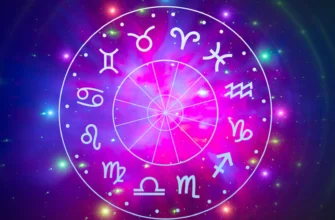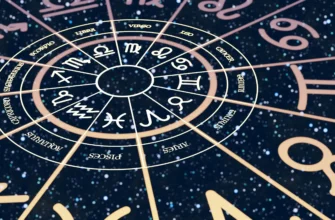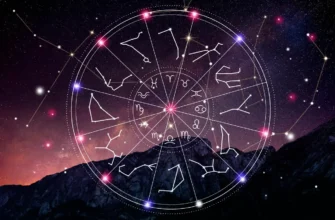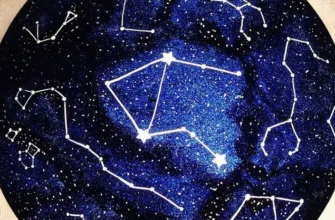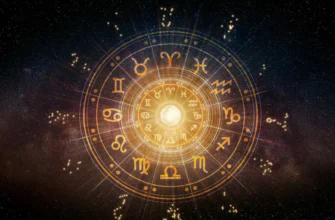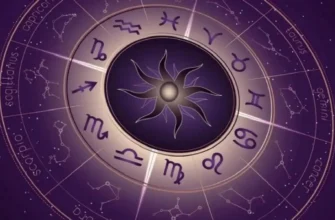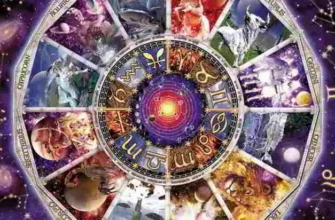Synastry chart analysis reveals the intricate ways planetary placements and aspects between two birth charts create the foundation for relationship dynamics, emotional connection, and long-term compatibility. When examining natal chart compatibility through astrology reading, specific house placements and planetary combinations illuminate whether partners can build emotional security, communicate authentically, and support each other’s growth.
- Synastry Chart Insights: Planetary Placements That Shape Relationship Dynamics
- Communication and Emotional Safety in the Fourth House
- Mercury in the Fourth House
- Saturn and Jupiter in the Fourth House
- Juno in the Fourth House
- Dreams, Ambitions, and Shared Vision
- Mars-Neptune Aspects
- Uranus Conjunct Midheaven or in the Tenth House
- Emotional Connection and Nurturing Dynamics
- Moon in the First House
- Ceres in the Sixth House
- Moon-Uranus Trines and Sextiles
- Moon-Saturn Favorable Aspects
- Intensity, Transformation, and Power Dynamics
- Pluto-Sun or Pluto-Venus Aspects
- Pluto-Mars Conjunctions and Oppositions
- Identity, Authenticity, and Personal Growth
- Aries Ascendant in Synastry
- Pallas in the First House
- North Node Placements
- Devotion, Commitment, and Material Comfort
- Vesta Conjunct Sun, Moon, or Ascendant
- Stellium in the Second House
Synastry Chart Insights: Planetary Placements That Shape Relationship Dynamics
Astrological chart interpretation of these synastry factors demonstrates how celestial bodies interact between two individuals, creating either harmonious flow or challenging friction that shapes daily relationship experiences. Understanding these birth chart connections through comprehensive relationship astrology helps couples recognize their natural strengths, navigate potential challenges, and cultivate the awareness necessary for creating fulfilling, lasting partnerships that honor both individuals’ needs and support mutual evolution.
Communication and Emotional Safety in the Fourth House
Mercury in the Fourth House
When Mercury appears in the fourth house of a synastry chart, unprecedented ability to open up and communicate authentically emerges between partners. Both individuals feel they can speak true thoughts without fear of judgment or criticism, creating psychological safety that allows vulnerability and honest self-expression. Words carry strong, mostly positive emotional impact on each other, landing deeply in ways that feel nourishing and validating.
Partners unintentionally say exactly what the other person needs to hear, as if accessing intuitive knowledge about each other’s inner world and emotional needs. Talking together becomes comforting after stressful or difficult days, with conversation itself providing healing and restoration. This placement creates relationships where communication serves as emotional medicine, helping partners process experiences and feel understood at profound levels.
The fourth house governs home, family, roots, emotional foundation, and the private self hidden from the outside world. Mercury’s presence here means intellectual connection intertwines with emotional security, creating partnerships where thinking and feeling integrate naturally. Partners can discuss feelings rationally while also allowing emotions to inform understanding, creating balanced communication that honors both mind and heart.
Saturn and Jupiter in the Fourth House
When Saturn and Jupiter conjunct in the fourth house or both appear in that house independently, both partners take each other’s emotional world seriously with mature commitment and optimistic faith. They spend time understanding each other’s needs deeply, seeking to gradually lower defensive walls built from past wounds and disappointments. Patience and dedication characterize their approach to building emotional intimacy.
These partners prove able to build wonderful homes together and make relationships into safe havens for both individuals—places where they know they can seek refuge when the outside world becomes unbearable or overwhelming. Strong trust, comfort, and fulfillment characterize these connections, with both individuals willing to work and invest consistently in creating and maintaining emotional security.
Saturn brings structure, commitment, responsibility, and long-term perspective to emotional dynamics, while Jupiter adds optimism, growth, expansion, and faith in the relationship’s potential. Together, they create foundations that can weather storms and support both partners through life’s inevitable challenges and transitions. This combination suggests relationships that mature beautifully over time, becoming increasingly stable and satisfying as years pass.
Juno in the Fourth House
When Juno, the asteroid of committed partnership, appears in the fourth house, relationships are destined to provide both partners with deep security and emotional stability. This couple actively creates environments where both feel protected, loved, and safe to be fully themselves without pretense or performance. This mutual commitment to emotional security becomes the central pillar of relationships and a major reason both parties consider taking connections further or believe they can last long-term.
Juno in the fourth house indicates that marriage or committed partnership potential runs high, as both individuals recognize they’ve found someone with whom they can build authentic home and family life. The relationship satisfies deep needs for belonging, rootedness, and emotional safety that everyone carries from childhood experiences and early family dynamics.
Dreams, Ambitions, and Shared Vision
Mars-Neptune Aspects
When Mars forms aspects with Neptune, especially conjunctions, trines, or sextiles, couples become more likely to take proactive steps toward achieving shared dreams and visions. Partners not only support each other in realizing long-held relationship dreams but also in pursuing personal dreams and ambitions independently. These relationships embody the principle that healthy partnerships support individual growth alongside shared evolution.
This couple dreams of building careers together, sharing each other’s achievements and successes, incorporating each other into personal visions, and growing together in every life aspect. Mars provides the drive, action, and initiative to manifest dreams, while Neptune supplies inspiration, imagination, and spiritual vision. Together, they create partnerships where ideals become reality through consistent effort and mutual encouragement.
Mars-Neptune aspects can also indicate spiritual sexuality, where physical intimacy transcends mere physical pleasure and becomes a gateway to transcendent experiences and soul-level connection. Partners may share interest in tantra, sacred sexuality practices, or simply experience physical union as deeply meaningful and spiritually significant.
Uranus Conjunct Midheaven or in the Tenth House
When Uranus conjuncts the Midheaven or appears in the tenth house of synastry charts, regardless of relationship type, people likely feel strong unity and friendship between them. Their relationship fits descriptions of being fresh, positive, unusual, yet full of trust and support that allows both individuals to pursue unique paths without fear of judgment or abandonment.
Partners encourage each other in pursuing personal goals and celebrate each other’s achievements as their own victories. Each person’s individual success matters deeply to this couple, and they play significant roles in each other’s goal pursuit and career development. This placement suggests relationships where both partners maintain strong individual identities while supporting each other’s aspirations.
Uranus brings innovation, uniqueness, freedom, and progressive thinking to career and public life matters. When activated in synastry, it creates partnerships where both individuals feel liberated to be themselves fully, pursue unconventional paths if desired, and break free from limiting societal expectations about how relationships should function or what partners should sacrifice for each other.
Emotional Connection and Nurturing Dynamics
Moon in the First House
When the Moon appears in the first house of synastry charts, relationships overflow with love and support at personal levels. Partners feel deep need to encourage each other to be authentic selves without masks or personas adopted for the outside world. Both can make each other feel safe enough to reveal vulnerable aspects of personality typically hidden from view.
Intimacy develops naturally and deeply with this placement. Partners likely become chosen family for each other, with bonds characterized by the sentiment “I choose you as family.” This transcends biological family connections, creating soul-level relationships where both individuals feel truly seen, accepted, and loved for who they are rather than what they do or how they perform.
The first house governs self, identity, physical body, and how individuals present themselves to the world. Moon’s presence here means emotional connection shapes identity and self-perception within the relationship context. Partners help each other become more authentic, emotionally honest versions of themselves through the safety and acceptance they provide.
Ceres in the Sixth House
When Ceres, the asteroid of nurturing and caretaking, appears in the sixth house, couples nourish and care for each other physically, emotionally, and psychologically. Both feel safe and supported in relationships and naturally reciprocate by giving what they receive, creating cycles of mutual care and support that strengthen bonds continuously.
Partners support each other in all areas—providing strong emotional support, becoming safe havens during difficult times, and caring for each other in most vulnerable moments. They truly enjoy doing things for each other, often without the other person asking, because both can easily sense needs and respond instinctively with appropriate care and attention.
The sixth house governs daily routines, health, service, and practical matters of life maintenance. Ceres here indicates that love expresses through practical acts of service, attention to partner’s health and wellbeing, and consistent presence during ordinary moments that comprise most of life. This placement creates relationships where love is demonstrated through actions rather than merely words.
Moon-Uranus Trines and Sextiles
Trines or sextiles between Moon and Uranus indicate couples feel sparks between them, experiencing not only fascination with each other but also deep inspiration. They allow themselves to feel freely without binding or attempting to control each other in any way, maintaining healthy autonomy alongside emotional connection. Genuine affinity and love for each other’s uniqueness characterizes these relationships.
Moon-Uranus aspects bring excitement and unpredictability to emotional dynamics without creating destabilizing insecurity. Partners experience emotional freedom—the ability to feel what they feel, express emotions authentically, and change as they grow without fear that evolution will threaten the relationship. This creates partnerships where both individuals can become more fully themselves rather than conforming to partner’s expectations or relationship limitations.
Moon-Saturn Favorable Aspects
Favorable aspects between Moon and Saturn, or mutual reception configurations where Moon is in Capricorn or Aquarius while Saturn is in Cancer, prove very helpful if both parties want to live together. These configurations provide not only lifestyle affinity but also strong sense of responsibility toward relationships. Commitment runs deep, priorities align naturally, and plans for future shared family life develop organically.
Saturn brings maturity, patience, and long-term perspective to emotional dynamics, while the Moon provides nurturing, emotional attunement, and capacity for intimate bonding. Together, they create stable emotional foundations that support building lasting partnerships, homes, and families. These aspects indicate relationships that withstand time’s tests and deepen rather than deteriorate as years pass.
Intensity, Transformation, and Power Dynamics
Pluto-Sun or Pluto-Venus Aspects
When Pluto forms aspects with Sun or Venus, completely new experiences emerge for both parties. Partners help each other gain different perspectives on relationships, changing old thought patterns and beliefs about love, connection, and intimacy. Strong attraction draws them together initially, with curiosity and interest pulling them from first interactions toward increasingly intimate engagement.
Deeper investigation leads partners to ultimately decide to approach relationships more intimately and vulnerably than they might typically risk. These prove powerful, intense, and highly transformative combinations that fundamentally change both individuals through the relationship experience. Pluto’s transformative energy combined with Sun’s identity or Venus’s love creates alchemical reactions that transmute both partners.
These aspects can indicate obsessive attraction, power struggles, and intense emotional experiences that push both individuals beyond comfort zones into psychological territory they’ve never explored. While challenging, these connections offer tremendous growth potential when both partners commit to conscious awareness and emotional honesty.
Pluto-Mars Conjunctions and Oppositions
When Pluto and Mars conjunct or oppose each other in synastry charts, besides indicating powerful attraction and seemingly inexhaustible desire, relationships also suggest couples will do anything to ensure not only relationship security but also each partner’s individual security and wellbeing. They may fiercely protect each other and demonstrate extreme protective instincts.
Strong fascination with each other characterizes these connections. Although many wouldn’t normally associate these aspects with anything beyond sexual intensity, they may also indicate intense admiration, focus, and concentration on each other. Partners become deeply invested in each other’s lives, sometimes to obsessive degrees that require conscious boundaries to remain healthy.
Pluto-Mars aspects bring tremendous sexual chemistry and drive, creating relationships where physical connection remains vital and compelling throughout the partnership’s duration. However, these aspects also bring potential for power struggles, domination dynamics, and jealousy that must be navigated with maturity and communication.
Identity, Authenticity, and Personal Growth
Aries Ascendant in Synastry
Aries Ascendant in synastry charts indicates fun-filled relationships where both parties can be authentic selves and feel comfortable in their true nature. Authenticity, adventure, and abundant fun characterize these connections. Both individuals likely possess strong wills, which could lead to arguments and conflicts, but patient relationships—or those with planets in second, fourth, or sixth houses—likely allow issues to resolve easily.
Partners remain open with each other, able to confide everything and rely on one another because of strong bonds and shared values. The Aries Ascendant brings directness, honesty, courage, and willingness to engage life boldly without excessive caution or fear. When this energy characterizes relationship dynamics, partnerships feel alive, vital, and continuously renewing rather than stagnating into comfortable routine.
Pallas in the First House
With Pallas, the goddess of wisdom, in the first house, couples approach various problems, conflicts, or troubles in peaceful and rational manners. They always verify each other’s perspectives and feelings before drawing conclusions, honoring both partners’ subjective experiences as valid rather than assuming one person’s perspective represents objective truth.
Furthermore, when disagreements arise, partners don’t try to “defeat” or overwhelm each other by proving themselves right. Instead, their love and respect for each other run so deep that they seek solutions making both feel comfortable, heard, and valued. Immense admiration, respect, and fascination for each other and each person’s unique personality characterizes these relationships.
Pallas brings strategic thinking, pattern recognition, creative problem-solving, and capacity to see whole pictures rather than getting lost in details. When activated in relationship charts, these qualities infuse partnership dynamics, helping couples navigate challenges with wisdom and grace.
North Node Placements
North Node positions in synastry charts reveal karmic lessons and spiritual purposes of relationships. These placements indicate areas where people are destined to grow together through their connection. For example, North Node in the first house suggests both parties experience significant personal growth, discovering aspects of themselves they were never previously aware of or had suppressed.
In the second house, partners learn to value what they consider important, reconsider priorities, and understand what truly matters beyond surface-level desires or socially-conditioned wants. The third house placement indicates learning extensively from each other—from mundane practical matters to complex philosophical concepts—while also developing capacity to express thoughts more effectively without fear of judgment or criticism.
Each North Node house placement carries specific lessons and growth opportunities that unfold through the relationship experience. Understanding these placements helps partners recognize what they’re meant to learn together and support each other’s evolutionary development consciously and intentionally.
Devotion, Commitment, and Material Comfort
Vesta Conjunct Sun, Moon, or Ascendant
When Vesta conjuncts Sun, Moon, or Ascendant in synastry charts, relationships fill with devotion—the quality Vesta represents most fundamentally. Partners demonstrate devotion not only through loyalty but also by investing time, energy, and effort in relationships consistently and wholeheartedly. Strong fascination exists between them, with both feeling their partner deserves all effort and affection they can provide.
Vesta brings focus, dedication, sacred commitment, and capacity for sustained devotion to whatever receives attention. In relationship contexts, this creates partnerships where both individuals prioritize their connection, making time and space for each other despite busy lives and competing demands. The relationship becomes a sacred space deserving reverence and consistent tending.
Stellium in the Second House
When clusters of planets appear in the second house, strong needs emerge for both partners to remain close to each other, with emotions illuminated by the other’s presence. This couple seeks each other’s company actively and works together to stabilize relationships. The other’s comfort and having everything they desire matters deeply to both individuals.
Partners may tend to spoil each other frequently, and if Venus or Jupiter appears in this stellium, indulgence could become excessive. The second house governs values, material resources, physical comfort, and self-worth. Planetary emphasis here indicates relationships where partners feel valued, supported materially and emotionally, and safe in knowing their needs will be met.
This placement suggests relationships where both individuals invest resources—time, money, energy—into building comfortable lives together. Material security matters to this couple, not from shallow materialism but from understanding that physical comfort supports emotional wellbeing and relationship stability.


